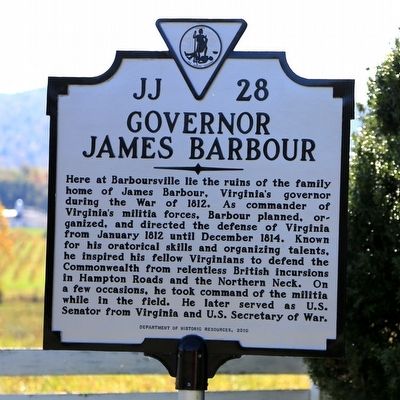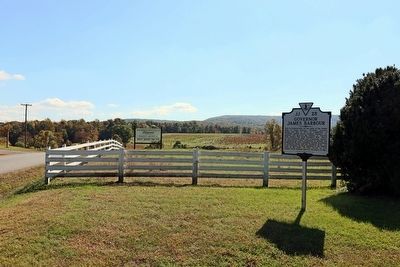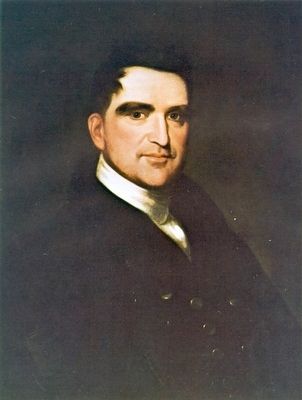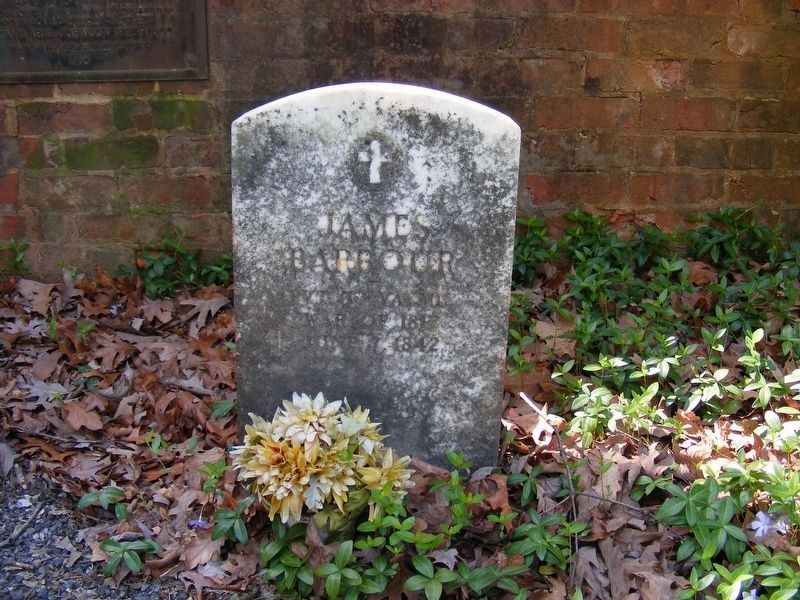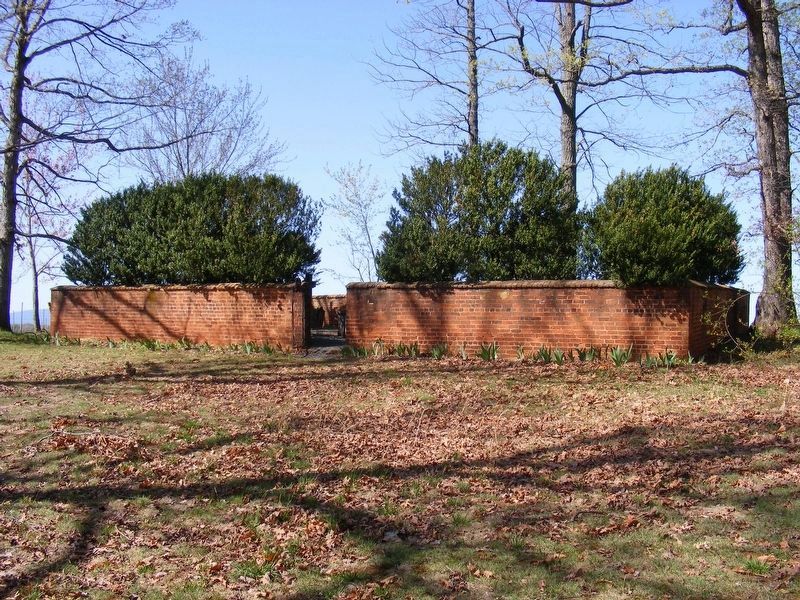Barboursville in Orange County, Virginia — The American South (Mid-Atlantic)
Governor James Barbour
Erected 2010 by Department of Historic Resources. (Marker Number JJ-28.)
Topics and series. This historical marker is listed in this topic list: War of 1812. In addition, it is included in the Virginia Department of Historic Resources (DHR) series list. A significant historical year for this entry is 1812.
Location. 38° 10.103′ N, 78° 16.745′ W. Marker is in Barboursville, Virginia, in Orange County. Marker is on Governor Barbour Street (Route 678) 0.1 miles east of Constitution Highway (Virginia Route 20), on the right when traveling east. Touch for map. Marker is in this post office area: Barboursville VA 22923, United States of America. Touch for directions.
Other nearby markers. At least 8 other markers are within 5 miles of this marker, measured as the crow flies. Barboursville (approx. 0.2 miles away); Barboursville Ruins (approx. 0.4 miles away); Montebello (approx. 1.9 miles away); Madison-Barbour Rural Historic District (approx. 3.6 miles away); General Thomas Sumter (approx. 4˝ miles away); The Maplewood Memorial Association (approx. 4.6 miles away); Maury’s School (approx. 4.6 miles away); Orange County / Louisa County (approx. 4.7 miles away). Touch for a list and map of all markers in Barboursville.
Also see . . . Wikipedia entry for James Barbour. “Barbour was in favor of the war, which he viewed as the only means by which to end British interference with the sovereignty of the U.S. As such, he began preparing the state for war. Barbour, whose father had trained the Orange militia, was aware of the inadequacies of Virginia’s militia. Accordingly, he sought appropriations for training and arming a stronger militia on February 11, 1812. Barbour urged the commanders of the militias from each county to prepare for defense of the country. He personally toured the tidewater region, which offered safe harbors for a British invasion. All of these acts earned Barbour the title of “the war governor.” On June 18, 1812, Congress declared war. So began the War of 1812. Perhaps because of his preparation for war, Barbour was reelected Governor in November 1812 without opposition. However, by 1813, Barbour was opposed by those who believed his strong policies of national unity were detrimental. Again, Barbour was elected governor. During this final term in 1814, Barbour finally convinced the Legislature to approve a plan of organizing 10,000 troops to be selected for a militia under Federal control. However, the Treaty of Ghent brought the war to an end. Barbour’s governorship also included many other acts, including exploration of the upper James River. He received funding to improve the roads of Virginia. He was also the first Governor to inhabit the Virginia Governor’s Mansion, designed by Alexander Parris. His contemporaries praised Barbour for his leadership. Barbour was viewed as an effective leader, whose executive powers, while stronger and more coherent than many of his predecessors, were adequately utilized to protect Virginia. Barbour also received the praise of the people of Virginia, who sent resolutions thanking the Governor for his strong and apt leadership during the war.” (Submitted on October 23, 2015.)
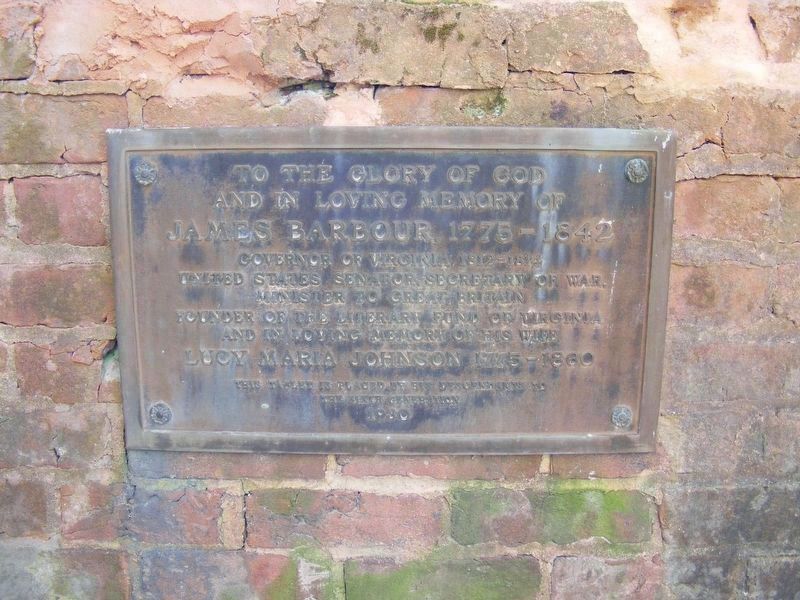
Photographed By Pete Payette, March 26, 2012
5. James Barbour Memorial Plaque
“To the glory of God and in loving memory of James Barbour, 1775-1842. Governor of Virginia 1812-1814, United States Senator, Secretary of War, Minister to Great Britain, founder of the Literary Fund of Virginia. And in loving memory of his wife, Lucy Maria Johnson 1775-1860. This tablet placed by his descendants to the sixth generation, 1930.”
Credits. This page was last revised on May 4, 2017. It was originally submitted on October 23, 2015, by J. J. Prats of Powell, Ohio. This page has been viewed 526 times since then and 21 times this year. Photos: 1, 2, 3. submitted on October 23, 2015, by J. J. Prats of Powell, Ohio. 4, 5, 6. submitted on May 2, 2017, by Pete Payette of Orange, Virginia.
